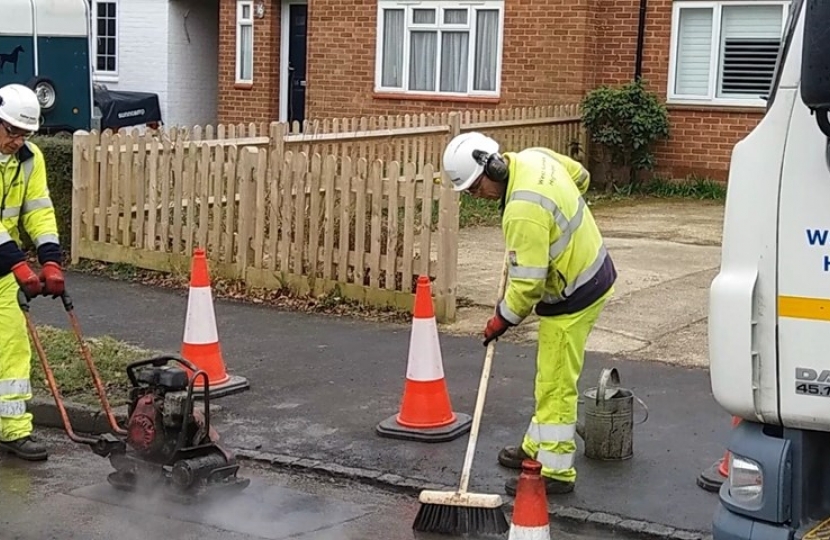
West Sussex Highways continues to take action against potholes, with 2,479 repairs completed across the county in January – that’s an average of more than 110 potholes repaired every working day.
The number of repair teams tackling the issue has also been increased from eight to 12.
Councillor Roger Elkins, Cabinet Member for Highways and Infrastructure, said: “I would like to assure people we take the pothole problem very seriously.
“Our highways teams continue to work hard repairing them and, despite some extremely wet weather, they have made significant progress tackling the issue. Particular thanks go to our contractor, Balfour Beatty Living Places.”
In recent weeks, the frequent change between cold temperatures, to mild/wet weather, and back again, has significantly increased the number of potholes on our roads.
Roads are not permanent structures and deteriorate over time from constant use, the weight of vehicles travelling on them and the effects of the weather. With the expansion and contraction caused by temperature change, deterioration will occur, resulting in new potholes.
In 2019, West Sussex Highways repaired 18,514 potholes – that’s an average of about 350 every week.
Potholes deemed to pose a hazard to road users are repaired within 28 days, or sooner if the problem is severe. However, repairs are only part of the picture: we also:
- Resurface whole/large sections of roads, removing all the surface and replacing with a new one on top;
- Micro-surface, where a layer of asphalt emulsion is blended with finely-crushed stone to seal the road surface and stop further deterioration
- Use surface dressing, spraying the road with bitumen binder, followed by a layer of stone chippings which are then rolled in, sealing the road and restoring its skid-resisting properties
All three methods contribute to our pothole prevention strategy and in 2019 to 2020, we invested a total of £8.9 million treating 806,000m2 of carriageway using these three methods – that’s the equivalent of nearly 60 miles of road.
The benefits of this include maximising the road’s life and providing a better running surface. This leads to fewer localised repairs which would otherwise cause much greater disruption over time.
The draft 2020/21 programme is being finalised but will see further investment in West Sussex’s roads.
More pothole facts:
The County Council is responsible for maintaining around 2,500 miles of road. Repairing defects, such as potholes, is done on a priority basis, dependent on size and depth.
- Our roads are inspected according to their hierarchy, with busy A roads, for example, inspected frequently but quieter routes inspected less often. However, people can help us by reporting concerns about potholes online, where they can also find out how we classify different-sized potholes.
- While the County Council is responsible for most roads in West Sussex, Highways England is responsible for, and maintains, the A27, A23 and M23.
Please also see the County Council’s winter readiness campaign.
